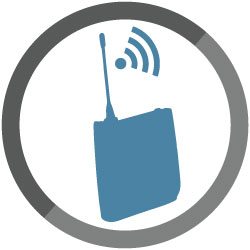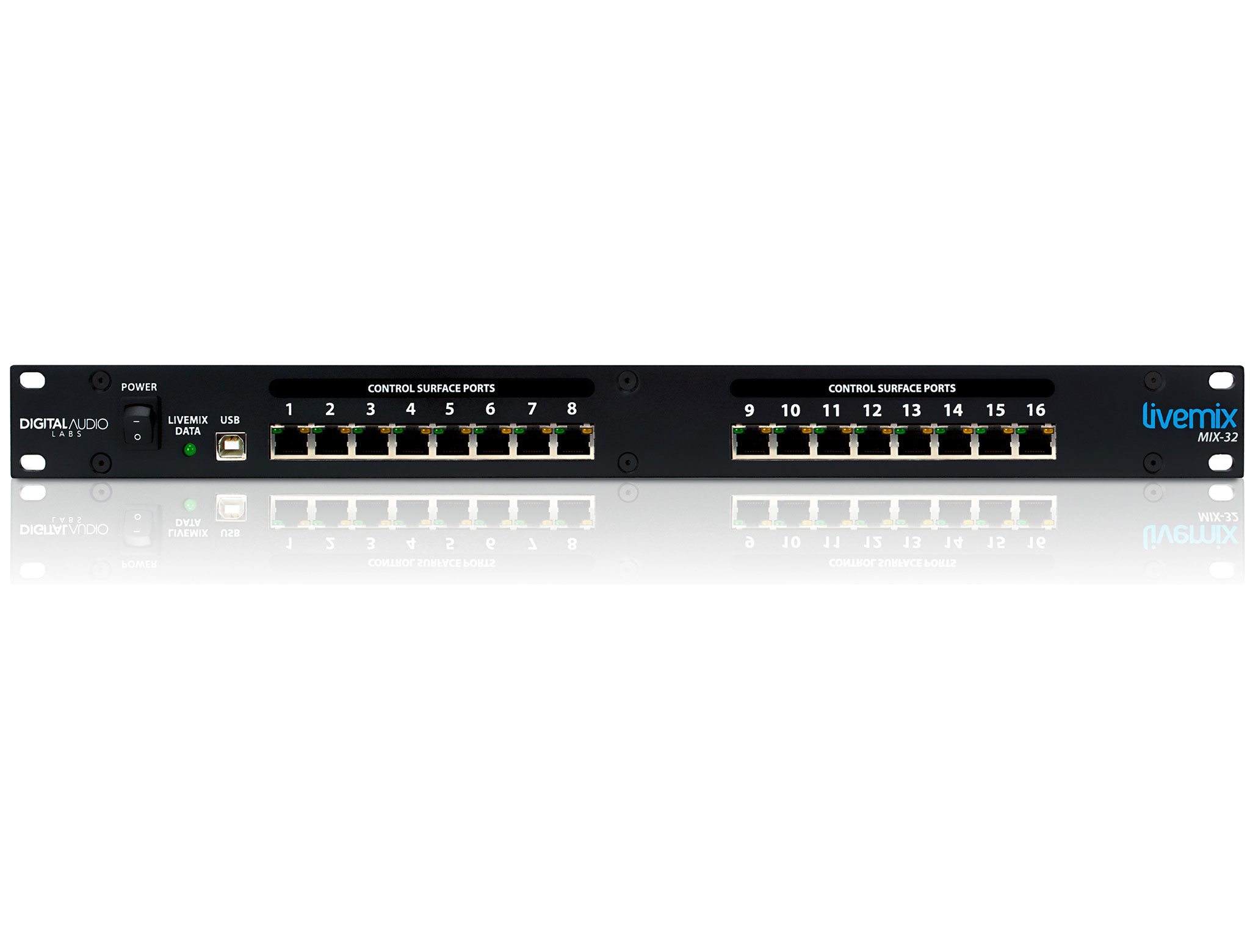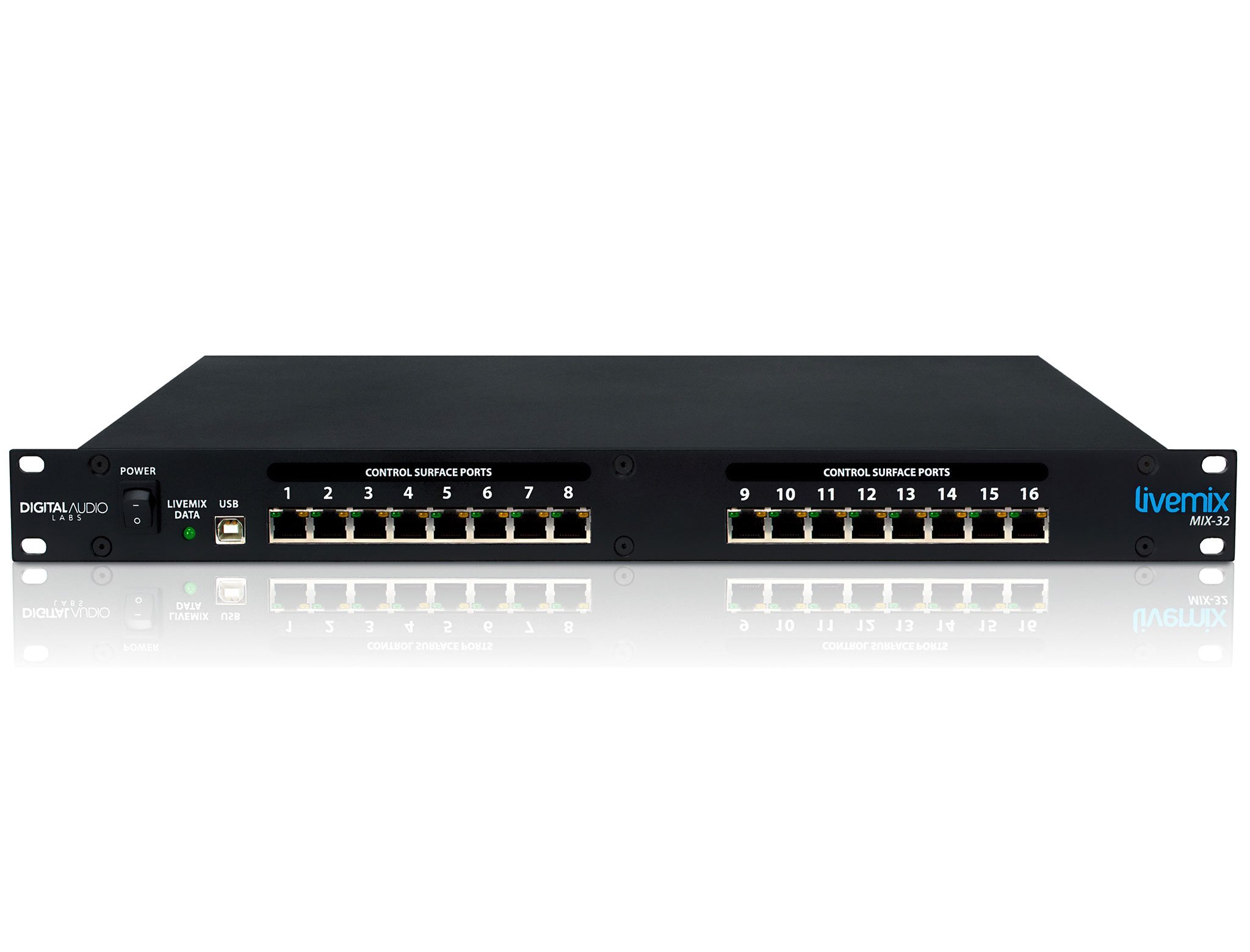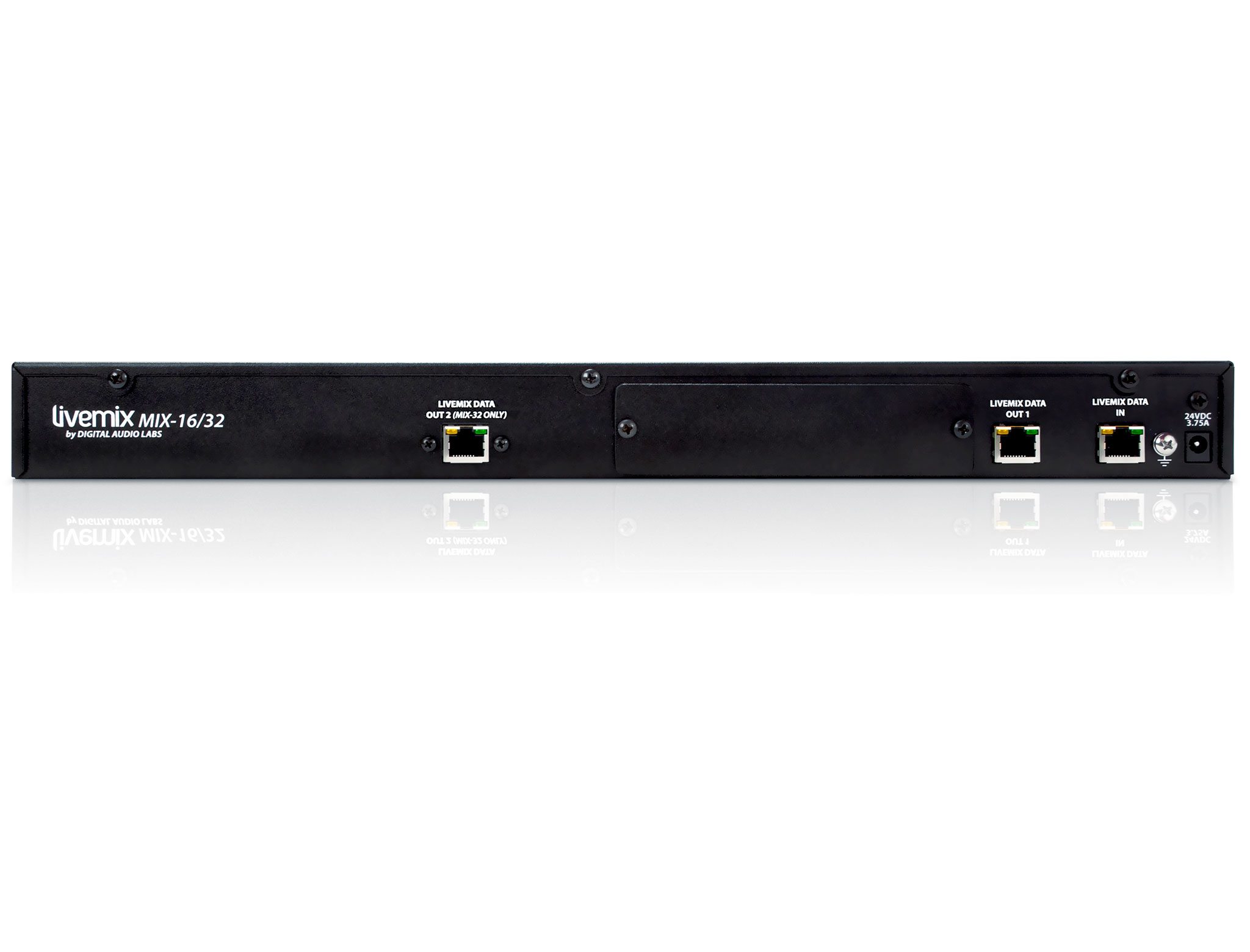The MIX-32 is the central mixer for the Livemix personal monitoring system. The MIX-32 supplies mix streams as well as power to each of the connected personal mixers.
The MIX-32 will generally be placed near the personal mixers, likely in a rack near the stage. The MIX-32 receives input data over a network cable, either from the AD-24 (shielded) or a Dante network via the LM-DANTE-EXP Dante card.
Each port on the MIX-32 supports two discrete mixes for up to 32 total mixes. Connect a single CS-DUO or up to two CS-SOLOs to each port with standard network cable. Maximum combined CAT5e cable (shielded or unshielded) distance is 100 meters.
FEATURES

24 Channel + 4 Accessory Channels
The MIX-16 receives 24 channels of audio from the AD-24 (for analog sources) or the LM-DANTE-EXP option card (for digital sources from a Dante™ Network). This is more than enough to handle the needs of church, studio, and live event stages while still being simple to use with the intuitive mix interface.

24-bit Mixing
High quality audio processing means mixes come together quicker and easier. Clear separation of instruments with no smearing and accurate sound reproduction make Livemix the best sounding personal monitor mixer on the market. Digital Audio Labs’s decades of experience in digital audio give you the very best sounding mixes possible.

Expansion Port (Option Card)
With the built-in expansion port, you never have to worry about future compatibility. The audio world is always changing and Livemix will support those changes so you can be assured that your personal monitor system will provide many years of best-in-class functionality.

Output to Analog for Transmitters
Each MIX-16 has an output port for connection to the optional Livemix DA-816 analog output unit. This lets you assign personal monitor mixes to one of 8 stereo outputs for easy wireless in-ear monitor integration.

Supports Up to 16 Personal Mixers
16 front panel ethernet ports provide power and mix capabilities to up to 32 personal monitor mixes. This can be through 16 dual mix CS-DUO units, 32 single mix CS-SOLOs or a combination.
| LIVEMIX MIX-32 | |
|---|---|
| Max Cable Length to CS-SOLO/CS-DUO |
100m CAT5e cable (shielded recommended) |
| Max Cable Length to AD-24/DA-816 |
100m CAT5e cable (shielded required) |
| Bit Rate | 24-bit Digital Mixing and Processing |
| Sample Rate | 48 kHz internal system rate Up to 96kHz sample rate input accepted from Dante network |
| Digital Format | Proprietary in system |
| Expansion | Option Card Slot |
Shielded cable is required for connecting both the AD-24 and the DA-816 to the MIX-16 or MIX-32. Shielded cable is not required for connecting a CS-SOLO or CS-DUO to the MIX-16/32 or connecting the LM-DANTE card to the Dante network. However, shielded is recommended.
As of Livemix version 4.0, the Dante Controller is required for setting up Livemix on the Dante Network. Versions prior to 2.15 do not require the Dante Controller, although it’s use is recommended. You will also need to use Dante Controller to set the Master Clock for the Dante Network. See the LM-DANTE User Guide pg. 8 for assigning Dante Channels.
Livemix works with either analog or digital (Dante) input. With the AD-24 analog input unit you can connect TRS or DB25 connectors from your console or recording interface. For a Digital connection with Dante, plug directly into a switch. For other digital formats (MADI), you may need a format converter.
We recommend to make the Master clock the console or Dante card in the console. NOTE: There are two ways this can be done. 1) Set the console’s internal clock as Master, then using Dante Controller, set the console’s Dante card as Master clock (for the Dante Network) and also check box “Sync to External”. This will allow the card to stay synched to the console’s master clock. 2) Set the console’s internal clock to be slave of the console’s Dante card. Using Dante controller, set the console’s Dante card as Master clock.







